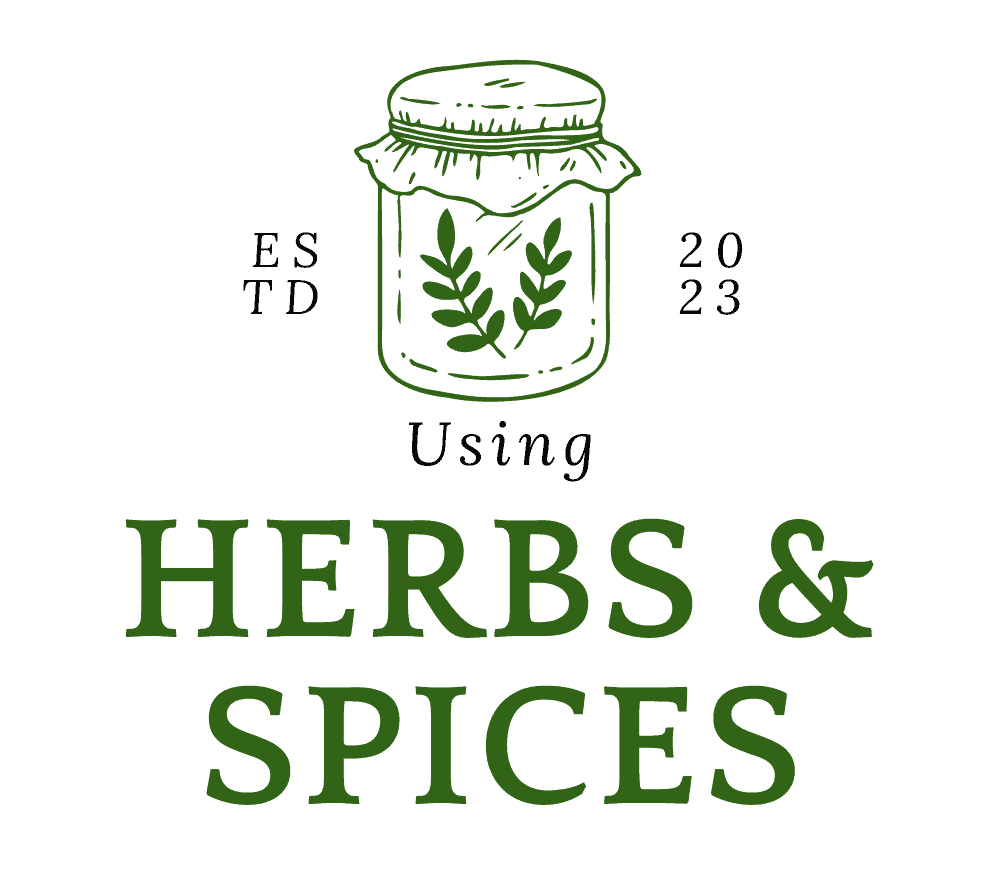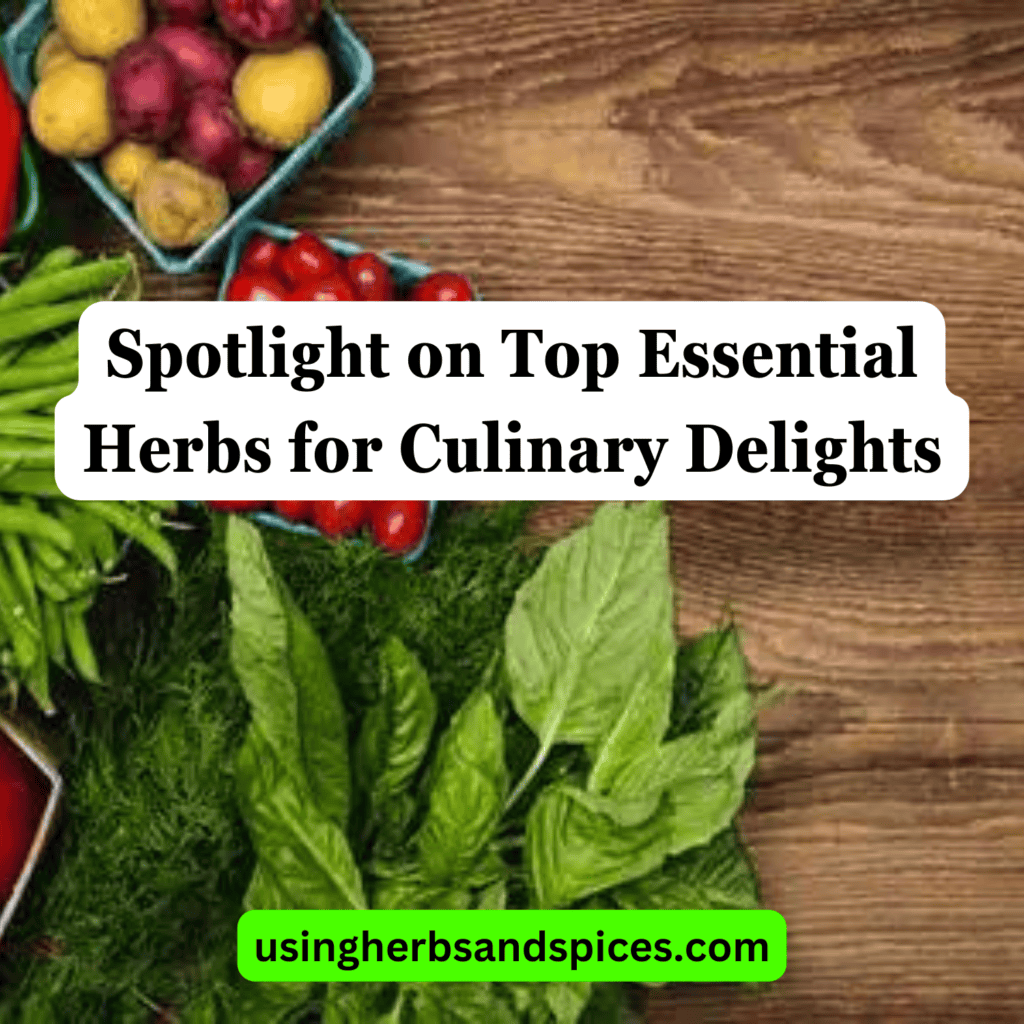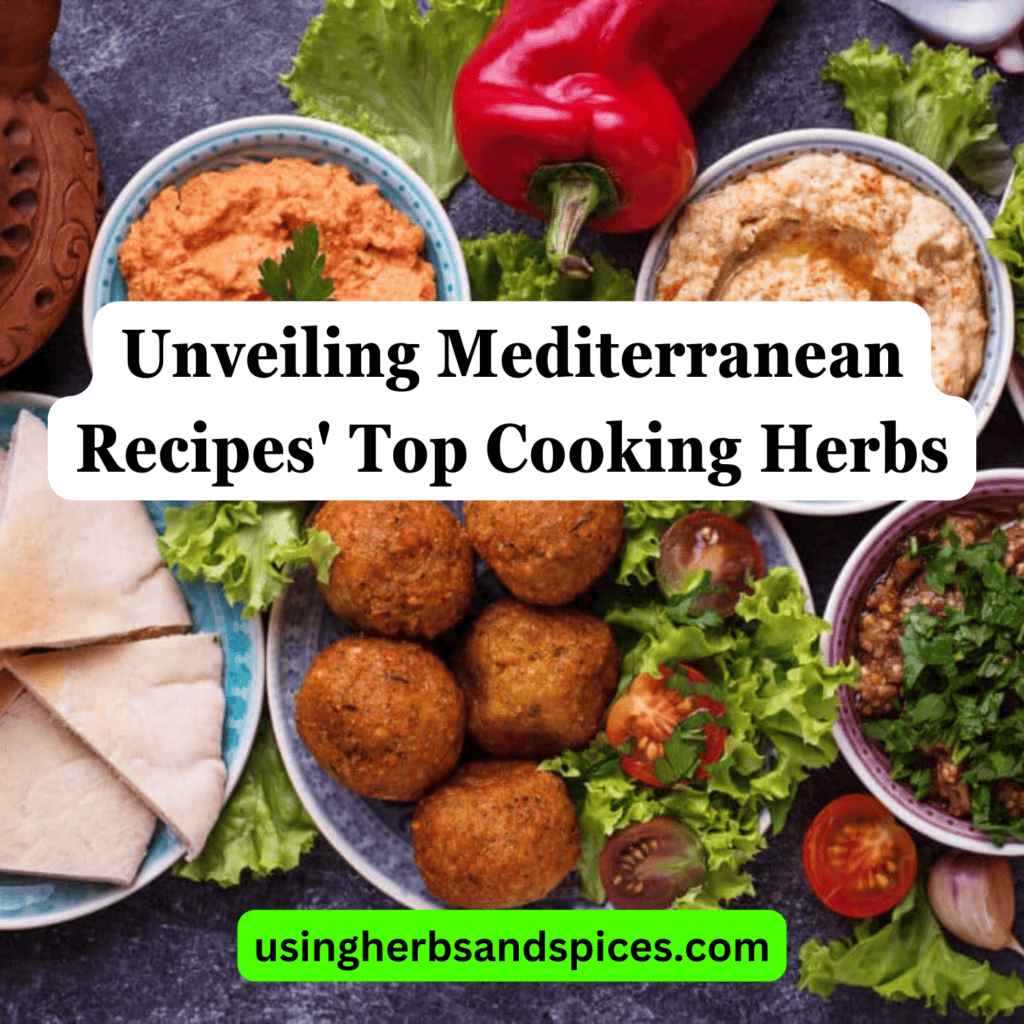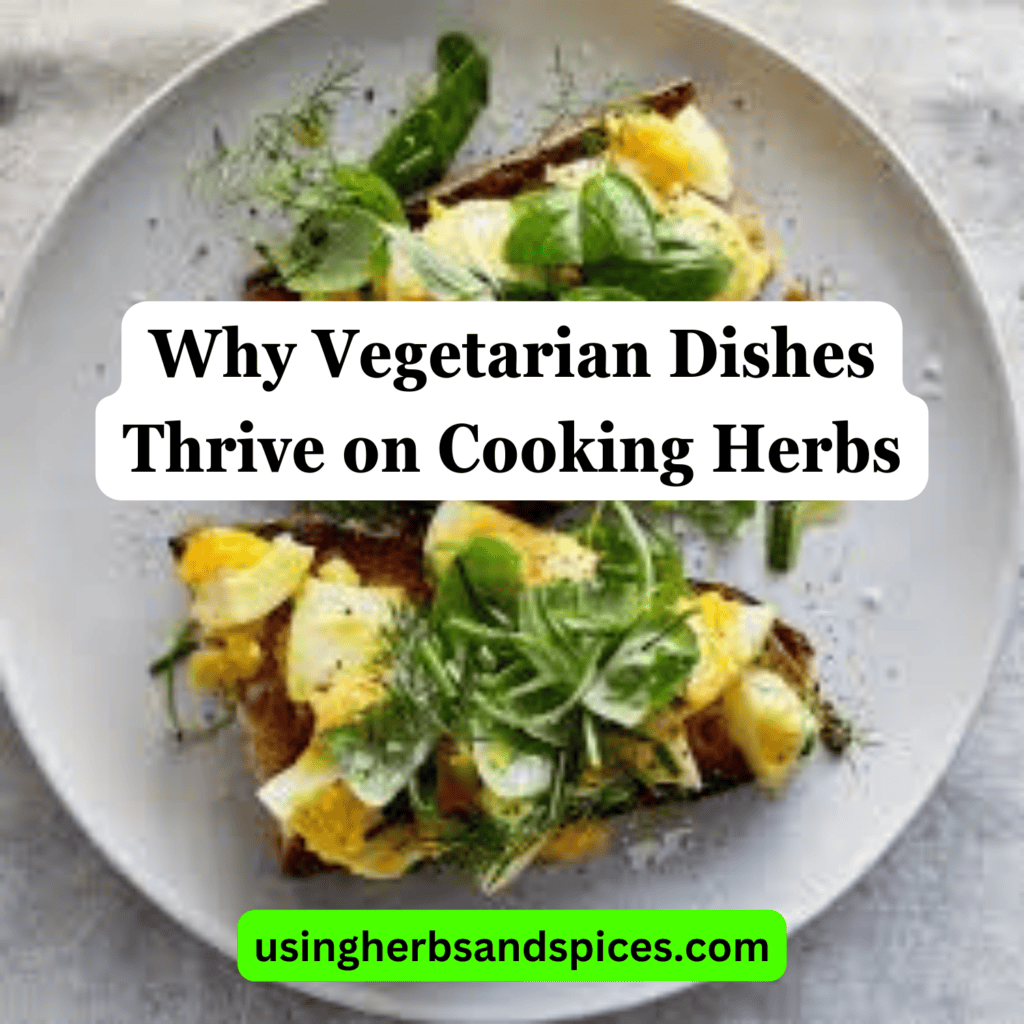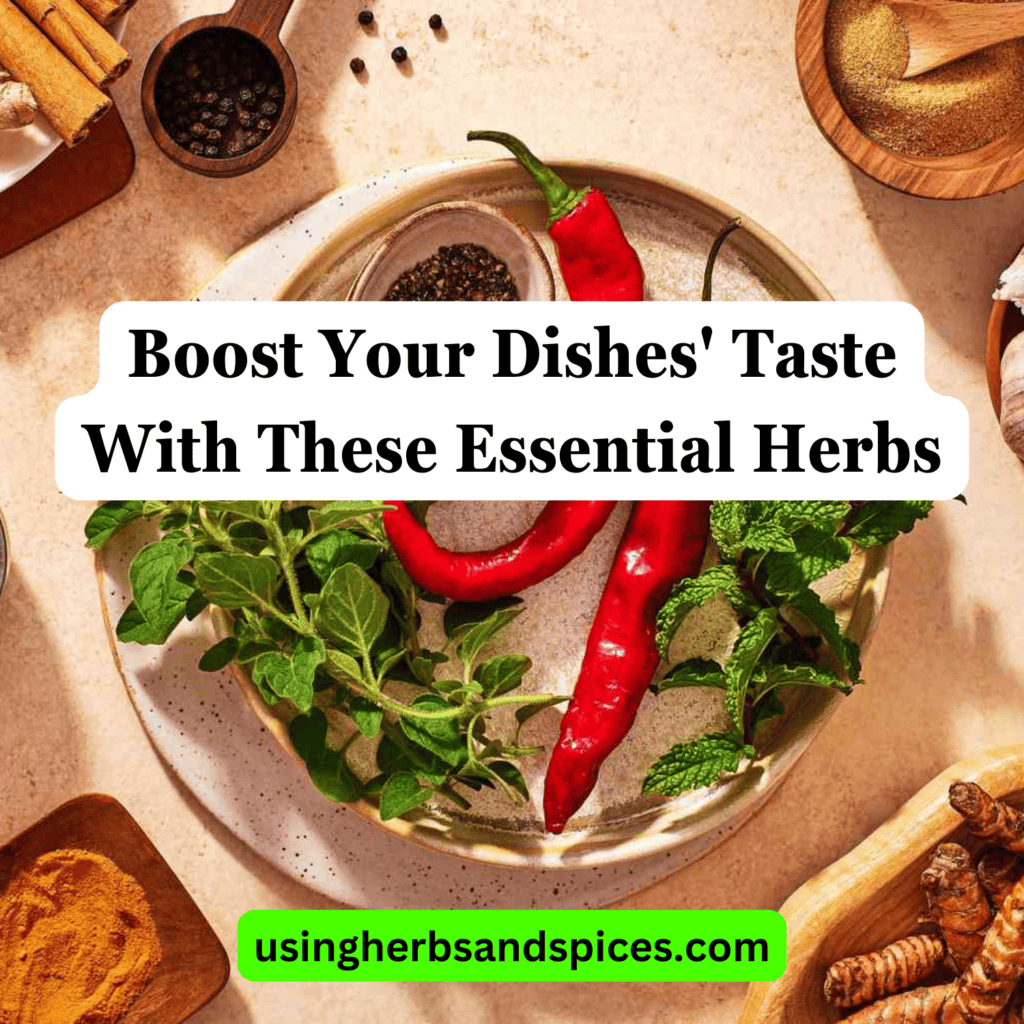If you’ve ever wondered how to keep your garden’s bounty vibrant through the colder months, mastering the art of preserving your favorite cooking herbs might be the secret you’re looking for. You’re possibly aware of the basic drying or freezing methods, but there’s a whole world of techniques that can enhance the flavors of your dishes and guarantee you’re using the freshest possible ingredients all year round. From choosing the right containers to experimenting with oil infusions and vinegar preservation, each step is essential. Now, consider the possibilities that await in your kitchen as you harness the full potential of your herb garden.

Key Takeaways
- Choose herbs like rosemary and thyme, known for retaining essence when dried, for optimal preservation.
- Use solar dehydrating or a dry, airy space to effectively dry herbs, maintaining their vibrant colors and nutrients.
- Store dried herbs in airtight containers with moisture control in a cool, dark place to preserve their aromatic intensity.
- Before freezing, blanch herbs to preserve color and flavor, or microwave to retain essential oils.
- For oil infusions and vinegar preservation, sterilize containers and choose robust herbs or quality vinegars to enhance flavors and extend shelf life.
Understanding Herb Preservation
To truly maximize your culinary creations, it’s important to grasp the ins and outs of preserving cooking herbs, ensuring their flavors remain vibrant and fresh long after they’ve been harvested. When you begin the journey of herb gardening, you’re not just growing plants; you’re cultivating a treasure trove of flavors that can transform your meals.
However, the key to harnessing these flavors lies in proper preservation techniques, steering clear of chemical preservatives that can undermine the natural essence of your herbs.
Preserving your herbs effectively means you can enjoy the fruits of your labor throughout the year, adding a burst of freshness to your dishes even in the depths of winter. It’s about embracing methods that lock in those aromatic qualities without resorting to artificial means.
Drying Herbs Effectively
Now, you’re stepping into the world of drying herbs, where selecting the right varieties sets the stage for success.
You’ll learn the art of employing ideal drying techniques that promise to lock in those vibrant flavors and aromas.
Choosing Herbs for Drying
Selecting the right herbs for drying is essential for preserving their vibrant flavors and aromatic qualities. When you immerse yourself in herb gardening, your goal is often to have a supply of fresh herbs at your fingertips.
Yet, not every herb takes well to drying. To make sure you’re choosing the best candidates, focus on herbs that are known for retaining their essence post-drying. Herbs like rosemary, thyme, oregano, and sage are stars in this process, offering a seamless shift from garden to pantry without losing their punch.
This careful selection means that when you reach for them, their use in cooking transports the fresh essence of your garden directly into your culinary creations, making every dish a tribute to the love and effort you’ve poured into your herb gardening journey.
Optimal Drying Techniques
Once you’ve chosen your herbs, mastering the art of drying them effectively guarantees their flavors remain robust and ready to elevate your dishes.
Solar dehydrating is a natural, energy-efficient method that uses the sun’s warmth to gently remove moisture, preserving the essence and aroma of your herbs. Position your herbs where they’ll receive ample sunlight but make sure they’re shielded from direct exposure to retain their vibrant colors and nutrients.
Air circulation plays a pivotal role in this process. Spread the herbs out in a single layer, allowing the air to circulate freely around them, speeding up the drying process while preventing any mold or mildew from developing.
This delicate balance of sun and air ensures your herbs dry perfectly, capturing their fullest potential for your culinary creations.
Storing Dried Herbs Properly
After mastering the solar dehydrating technique, it’s equally important to store your dried herbs properly to maintain their aromatic intensity and flavor profile.
Airtight solutions are your best friends here. Opt for glass jars or vacuum-sealed bags that lock out moisture and preserve the essence of your herbs. Remember, moisture is the enemy of dried herbs, leading to mold and loss of flavor.
Incorporate moisture control practices by adding silica gel packets to your storage containers, ensuring that your herbs stay dry and potent. Storing them in a cool, dark place further protects their qualities, keeping them ready to elevate your dishes with a burst of flavor anytime.
Join the ranks of savvy chefs who know that well-preserved herbs are the secret to unforgettable meals.
Freezing Techniques Explored
Explore the art of freezing your favorite herbs to preserve their fresh flavors for months, employing techniques that lock in aroma and taste. When it comes to preserving the essence of your garden’s bounty, don’t overlook the simple yet effective method of freezing. You’re part of a community that values the freshness and vibrancy that herbs bring to every dish, and you know that preserving their character is paramount.
Start by blanching herbs to brighten their color and preserve their flavor before freezing. This quick dip in boiling water, followed by an immediate plunge into ice water, halts enzyme activity that can cause loss of flavor and color. After blanching, pat the herbs dry gently but thoroughly.
Alternatively, microwaving herbs is a less conventional but equally viable method. Spread the herbs on a microwave-safe plate covered with a paper towel and microwave on high for intervals of 30 seconds, checking regularly until they’re dry. This technique is surprisingly effective at preserving the herbs’ essential oils, ensuring that their aroma and taste are as close to fresh as possible.
These freezing techniques are your ticket to enjoying the essence of summer’s bounty well into the winter months.
Utilizing Oil Infusions
Another innovative way to preserve the burst of flavor in your herbs is through creating oil infusions, a method that not only extends their shelf life but also enriches your cooking with intense aromas and tastes. By choosing the right herb selection, you’re not just saving these fragrant greens; you’re elevating every dish they touch. The process is straightforward, yet the infusion benefits are immense, transforming simple oils into rich, flavorful concoctions that whisper tales of your garden with every drop.
Here’s how you can immerse yourself in the world of oil infusions:
- Choose Your Herbs Wisely: Opt for robust herbs like rosemary, thyme, or basil. Their oils capture the essence of the herb, making your selection pivotal to the infusion’s success.
- Sterilize Your Containers: Make sure your jars or bottles are perfectly clean to prevent any spoilage.
- Patience is Key: Allow your herbs to infuse in the oil for at least two weeks. The longer it sits, the more pronounced the flavors.
This method not only crafts a bridge between you and your cherished garden but also instills a sense of belonging with every meal. Embrace the infusion benefits, and let your culinary creations sing with the spirit of homegrown herbs.
Vinegar Preservation Methods
Diving into the world of vinegar preservation, you’ll discover a timeless technique that not only extends the shelf life of your herbs but also imbues them with a tangy zest, perfect for enhancing your culinary creations. By selecting the right vinegar types, you’re joining a community of culinary enthusiasts who cherish the art of preserving the essence of their garden.
When you’re beginning on this flavorful journey, it’s crucial to choose your vinegar wisely. Apple cider and white wine vinegars are favorites for their subtle flavors that don’t overpower the herbs. The process is straightforward: pack your fresh herbs into clean jars, cover them with vinegar, and seal tightly. This method not only preserves the herbs but also creates infused vinegars for salad dressings, marinades, and more.
Preservation safety is paramount. Guarantee your jars are sterilized to prevent any bacterial growth, and store your vinegar-infused herbs in a cool, dark place. Within a few weeks, you’ll have a pantry stocked with vibrant, flavorful vinegars.
Creating Herb Butters
After mastering vinegar preservation, you’re ready to explore the rich world of creating herb butters, a delightful way to preserve your garden’s flavors.
First, you’ll need to pick the right herbs, those that blend harmoniously with butter’s creamy texture.
Then, we’ll guide you through mixing and shaping your butter for elegance, and finally, share secrets on storing these aromatic treasures for longevity.
Choosing Right Herbs
Selecting the ideal herbs for your butter will elevate both its flavor and aromatic qualities, transforming simple meals into gourmet experiences. When you’re choosing herbs, consider:
- Herb gardening: Growing your own herbs guarantees you have the freshest flavors at hand. Basil, chives, and parsley thrive in small garden spaces and pots, making them perfect for herb butter.
- Seasonal availability: Opt for herbs that are in season for peak flavor. Summer offers a bounty of basil and dill, while fall brings robust rosemary and sage.
- Personal taste preferences: Tailor your herb butter to your palate. Love Italian cuisine? Go for basil and oregano. Prefer French dishes? Tarragon and thyme are your go-tos.
Incorporating these elements will ensure your herb butter isn’t only flavorful but also a reflection of your culinary identity.
Mixing and Shaping Techniques
How do you transform your chosen herbs into a culinary masterpiece?
The secret lies in mastering the art of mixing and shaping herb butters.
Begin by expertly grinding your herbs, a technique akin to planting seeds of flavor into a fertile ground of unsalted butter. This process isn’t just about combining; it’s about infusing.
Gently fold your freshly ground herbs into softened butter, ensuring each granule of herb gets intimately acquainted with its creamy counterpart.
Then, shape the butter into logs or molds, an act of creation that’s both practical and personal.
You’re not just mixing ingredients; you’re crafting a bridge between the garden and the table, embedding the essence of your herb garden into every meal.
Storing for Longevity
Once you’ve crafted your herb butters, proper storage becomes the key to preserving their freshness and flavor for future culinary adventures. Here’s how you can guarantee your creations from your herb gardening efforts stand the test of time:
- Wrap Tightly in Parchment: After shaping, wrap your herb butter logs in parchment paper, sealing in the freshness.
- Store in Airtight Containers: Transfer the wrapped butters into airtight containers to protect them from absorbing fridge odors.
- Freeze for Longevity: For long-term storage, freezing is your best bet. This method preserves the vibrant flavors, allowing you to enjoy a taste of your garden year-round, without the need for commercial dehydrators.
Salt Layering Basics
Why not preserve your garden’s bounty by mastering the basics of salt layering, an age-old technique that locks in the freshness and flavor of cooking herbs? This method, deeply rooted in the tradition of salt mining, isn’t just about keeping your herbs vibrant; it’s a nod to a sustainable way of living, mindful of health implications that come with the food preservation territory. Using salt, a natural preservative, you sidestep the pitfalls of artificial preservatives, embracing a healthier lifestyle while ensuring your herbs retain their essence.
To start, choose a high-quality salt—coarse sea salt or Himalayan pink salt are excellent choices for their mineral content and purity. Spread a layer of salt at the bottom of an airtight container, then add a layer of herbs, ensuring they’re not too crowded. Alternate between salt and herbs until the container is full, finishing with a layer of salt. This method not only preserves the herbs but also infuses them with a subtle, earthy flavor, enhancing your culinary creations.
Proper Storage Conditions
Now that you’ve mastered salt layering, let’s make sure your herbs enjoy a longer shelf life by focusing on their storage conditions.
You’ll need to keep an eye on the optimal temperature and humidity levels, as these factors can make or break your herbs’ freshness.
Also, considering how light exposure and the type of container you use can impact preservation will be vital in keeping those flavors vibrant.
Ideal Temperature and Humidity
To best preserve your cooking herbs, it’s crucial to store them at the ideal temperature and humidity levels, which typically means keeping them cool and dry. The perfect conditions can greatly extend their shelf life, guaranteeing they remain flavorful and aromatic for your culinary creations.
Here are a few key tips:
- Guarantee proper airflow around your herbs to prevent any moisture buildup.
- Store herbs away from direct sunlight to avoid sunlight effects that can degrade their quality.
- Aim for a storage temperature between 60-70°F (15-21°C) and a humidity level around 60%.
Light Exposure Considerations
Understanding the impact of light exposure on your herbs is crucial to maintaining their freshness and potency during storage. You’re part of a community that values the vibrant flavors and colors herbs bring to every dish.
However, the sunlight intensity can be a double-edged sword, capable of causing color fading and reducing the aromatic quality of your beloved herbs. To preserve their essence, make sure they’re stored away from direct sunlight.
This doesn’t mean locking them in darkness but finding a balance where they’re shielded from the harsh effects of light while still kept in a well-ventilated space.
Embrace the practice of cherishing your herbs by safeguarding them from light’s detrimental impact, and you’ll continue to be welcomed by their robust flavors and colors in every meal.
Container Selection Tips
Choosing the right container is a pivotal step in guaranteeing your herbs remain vibrant and flavorful for as long as possible. When you’re selecting a container, you’re not just picking a storage solution; you’re choosing a home where your herbs can thrive.
Here are a few tips to guide you:
- Material Durability: Opt for containers made of materials that can withstand frequent use and cleaning without deteriorating. This guarantees your herbs are kept in conditions that preserve their freshness.
- Aesthetic Value: Choose a container that not only serves its purpose but also adds to the beauty of your kitchen. It’s about feeling a sense of pride in your herb collection.
- Proper Ventilation: Ensure the container allows for some airflow to prevent moisture buildup, which can lead to mold and spoilage.
Choosing the Right Containers
Selecting the right containers is essential for extending the shelf life of your preserved herbs, ensuring they remain aromatic and flavorful for longer. When you’re on this journey, the aesthetics of your containers play a crucial role. They become part of your kitchen’s charm, reflecting your personality and the care you put into preserving nature’s gifts. Opting for containers made from recyclable materials not only speaks to your commitment to the environment but also adds an earthy, authentic touch to your culinary space.
Glass jars, with their timeless appeal, are ideal candidates. They don’t absorb smells or colors, making them perfect for keeping each herb’s scent and taste intact. Choosing glass means you’re leaning towards sustainability, as these can be reused endlessly without compromising the quality of your herbs.
Metal tins, while not as transparent, offer a rustic look and are excellent for dry herbs, provided they’re kept in a cool, dark place to prevent any alteration in flavor.
Labeling and Organizing Tips
Once you’ve picked the right containers, it’s crucial to label and organize them efficiently to streamline your culinary endeavors. Here’s how you can transform your herb preservation into a harmonious blend of functionality and charm, ensuring you’re always just a pinch away from elevating your dishes.
- Utilize Clear Labeling: Invest in waterproof labels and a permanent marker to clearly mark each container with the herb’s name and the date of preservation. This not only adds a personal touch but also helps you keep track of freshness.
- Embrace Color Coding: Assign each herb category (like spices, leafy herbs, or roots) a specific color for its label or container lid. This visual cue creates an intuitive system, allowing you to easily grab what you need without a second thought, enhancing your kitchen’s aesthetic and your cooking efficiency.
- Implement Space Saving Solutions: Opt for stackable containers or magnetic spice tins that can attach to the side of your fridge. This approach maximizes vertical space, keeping countertops clear and your herbs within easy reach.
Refreshing Dried Herbs
After organizing your kitchen with labeled containers for your herbs, it’s time to focus on how to rejuvenate those dried herbs to guarantee they bring the fullest flavor to your dishes. Dried herbs, while convenient, can lose their pizzazz over time. But don’t fret; there’s a simple trick to bring them back to life and infuse your meals with vibrant tastes that echo the essence of your herb gardening efforts.
Gently warming your dried herbs is the key. Before adding them to your cooking, heat them for a few seconds in a dry pan over low heat. This gentle warmth releases the oils trapped in the dried herbs, reviving their aroma and flavor. You’ll notice the difference immediately—their fragrance becomes more pronounced, a signal they’re ready to elevate your cooking.
Moreover, consider spice blending as a way to refresh your approach to using dried herbs. Combining them in thoughtful ways can create new flavor profiles, making each dish a unique experience. By mastering the art of spice blending, you’ll not only refresh dried herbs but also transform your cooking into an art form, making every meal an opportunity to explore and belong to the rich world of flavors.
Monitoring for Freshness
To guarantee your cooking herbs retain their vibrant essence, it’s crucial to regularly check their freshness, a simple yet effective step in preserving their bold flavors and aromatic qualities. Monitoring isn’t just about making sure they look good; it’s about fostering a deeper connection with the ingredients that elevate your culinary creations. You’re not just a cook; you’re a curator of taste and tradition.
Incorporate these practices to keep your herbs at their peak:
- Herb Rotation: Always use the oldest herbs first to maintain a cycle of freshness. Label your jars or bags with dates to make it easier. This isn’t just about organization; it’s about honoring the natural cycle of your culinary allies.
- Pests Detection: Keep an eye out for any signs of pests or mold. Early detection can save the rest of your stash from contamination. Your herbs are precious; protecting them is protecting your culinary heritage.
- Visual and Aromatic Checks: Regularly inspect the color and sniff for any off scents. Fresh herbs should look vibrant and smell earthy, not musty. This sensory engagement isn’t just maintenance; it’s a ritual, a moment of connection with the natural world.
Embracing these steps ensures your herbs remain a dynamic part of your cooking, infusing every dish with the magic of well-preserved flavor.
Frequently Asked Questions
Can Pets Consume Preserved Herbs Safely?
You should be cautious about giving preserved herbs to your pets due to herb toxicity and varying pet diet preferences. Prior to adding them to your pet’s diet, it is crucial to research or consult a vet.
How Does Altitude Affect Herb Drying Times?
At higher altitudes, your herb drying times can decrease by up to 50%! Altitude impacts moisture levels, speeding up the process. You’re part of a savvy group mastering the art of perfect herb preservation.
Are There Any Herbs That Shouldn’t Be Preserved?
Some herbs, due to their toxicity levels, really shouldn’t be preserved. You’ve got to select the appropriate preservation methods to guarantee safety. It’s like joining a culinary club where every detail matters for your health.
Can Preserved Herbs Replace Fresh in Recipes?
Yes, preserved herbs can replace fresh in recipes, but the flavor comparison depends on the preservation methods used. You’ll find that some dishes welcome the change, making you feel right at home with each bite.
Do Different Herbs Have Varying Shelf Lives?
Ever wondered why basil wilts faster than rosemary? Yes, different herbs have varying shelf lives. Mastering herb dehydration and moisture control’s key to prolonging their freshness. You’re not just preserving flavors; you’re safeguarding memories.
Preserving Fresh Flavors for Year-Round Culinary Dance
In the dance of culinary arts, your herbs are your partners, twirling flavors into your dishes. By drying, freezing, infusing in oil, or preserving in vinegar, you’re ensuring this dance lasts all year long.
Don’t forget to label and store them properly, keeping an eagle eye on freshness. A little refresh here and there, and your herbs will always be ready to tango with your taste buds.
So, embrace these tips, and let your culinary creations sing with vibrant, herb-infused flavors.
